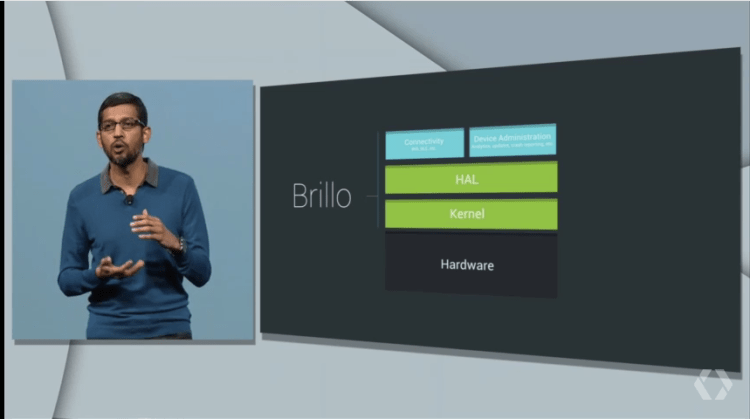Google today moved deeper into the Internet of Things with the announcement of its new IoT operating system, Brillo, and a new common language for connected devices called Weave.
Brillo is designed to run on connected devices that have small processors and low memory. The OS manages and stores data collected by sensors in the device.
Device makers will be able to bake the OS software onto the chips used in their devices, so those devices can immediately connect with Android platforms.
The new OS will integrate with and extend Google’s existing Nest technology. Nest’s smart thermostat and smoke alarm already integrate with other connected home devices, including some from LG, Whirlpool, Logitech, and even a Pebble smartwatch. Brillo will widen that set of products.
June 5th: The AI Audit in NYC
Join us next week in NYC to engage with top executive leaders, delving into strategies for auditing AI models to ensure fairness, optimal performance, and ethical compliance across diverse organizations. Secure your attendance for this exclusive invite-only event.
Google also announced Weave, a common protocol developers can use to make devices talk to each other. For instance, a door manufacturer can define a term in Weave (like “lock” or “unlock”), and all other devices in the connected home will understand it.
Weave is available cross-platform, Google says, so a smartphone running Brillo can turn on an oven on another platform, like Samsung’s SmartThings.
Google has done its best to get Android on as many phones and tablets as possible. Now, Google wants to get Android installed on millions of low-power end point devices.
Samsung has implemented a similar strategy with its Artik chipsets. The chip come in three sizes and can be baked into all kinds of devices to connect them to SmartThings.
Brillo will become available to developers in Q3, while the Weave protocol will be ready in Q4.
To view all of VentureBeat’s Google I/O coverage, click here.

